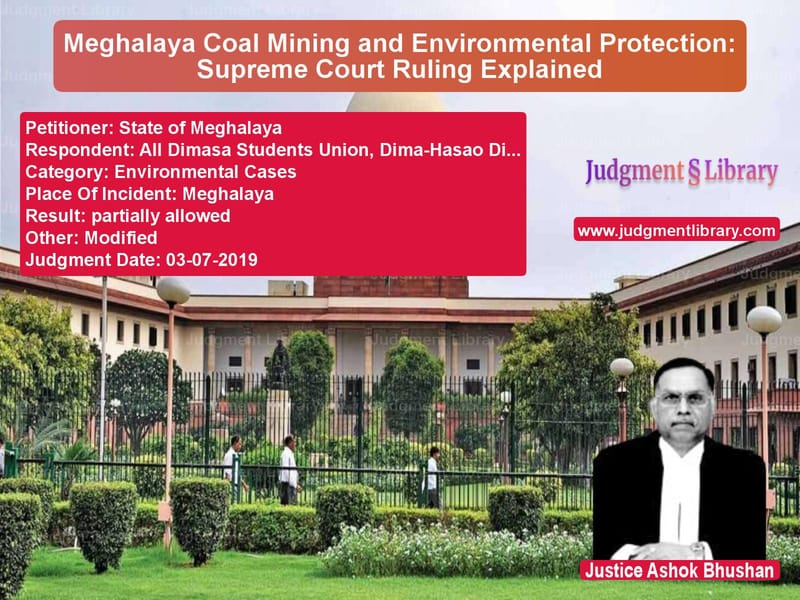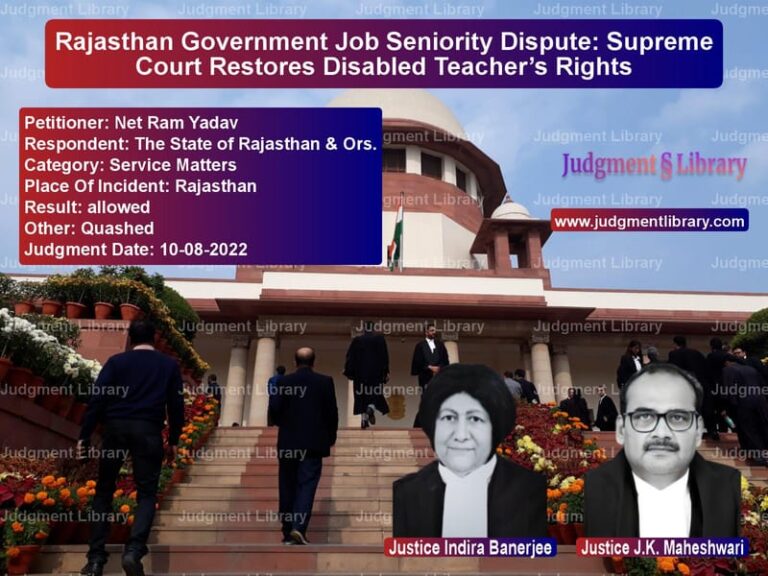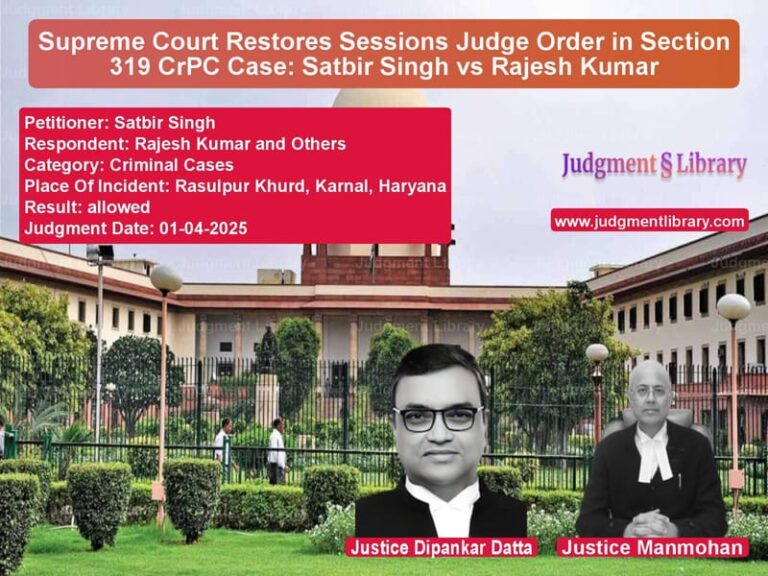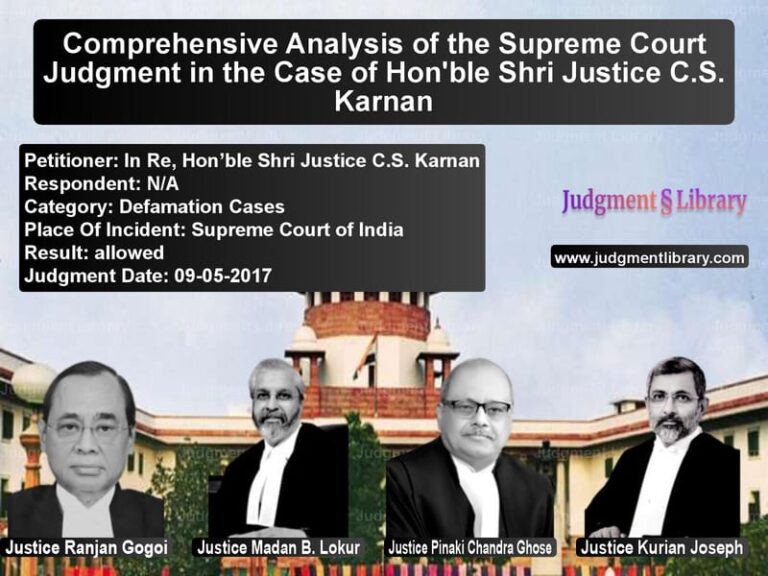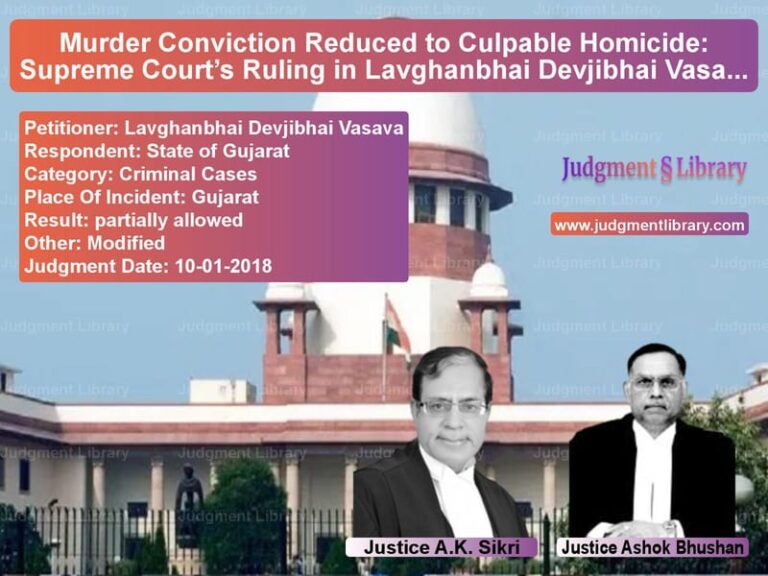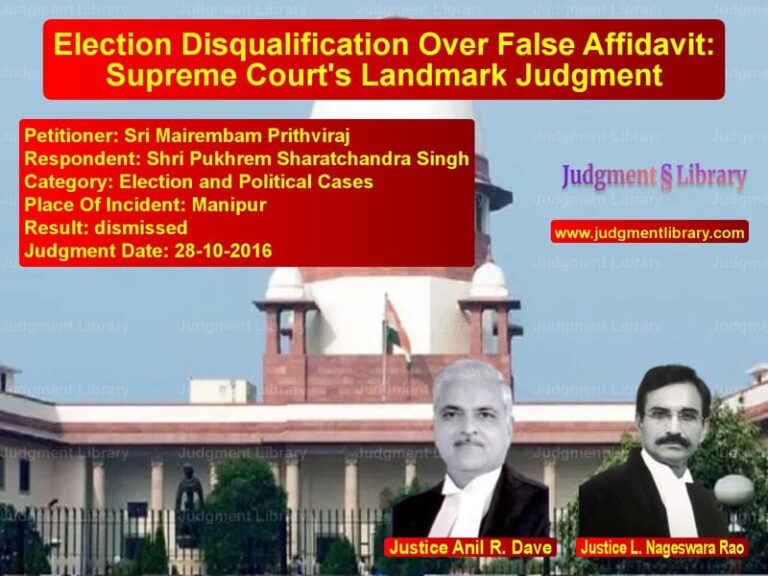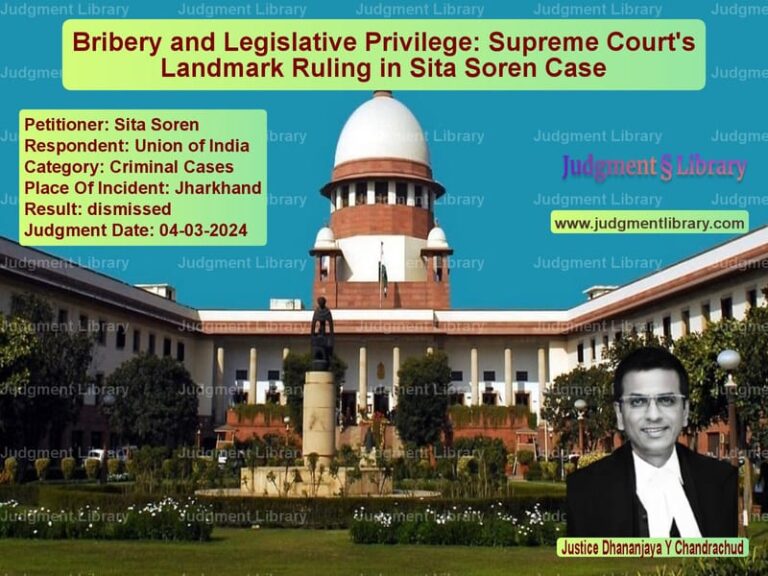Meghalaya Coal Mining and Environmental Protection: Supreme Court Ruling Explained
The Supreme Court judgment in the case involving coal mining in Meghalaya has profound implications on environmental protection, governance, and tribal rights. The case originated from concerns over unregulated coal mining and its devastating effects on the environment and public health.
The appeals were filed by the State of Meghalaya, the Garo Hills Autonomous District Council, the State Coordination Committee of Coal Owners, Miners, and Dealers Forum, and private individuals against the National Green Tribunal’s (NGT) orders imposing a ban on coal mining in the state due to environmental concerns. The court had to determine the applicability of the Mines and Minerals (Development and Regulation) Act, 1957, and whether coal mining in privately or tribally owned land required a mining lease.
Background of the Case
The case originated from a Public Interest Litigation (PIL) filed after reports emerged about unregulated coal mining in Meghalaya, specifically the dangerous practice of rat-hole mining. The NGT took cognizance of the issue and issued several orders banning unregulated mining and transportation of coal.
Key Issues Before the Court
- Whether the National Green Tribunal (NGT) had jurisdiction over coal mining in Meghalaya.
- Whether the provisions of the Mines and Minerals (Development and Regulation) Act, 1957, applied to the tribal areas of Meghalaya.
- Whether a mining lease was required for extracting coal from privately or tribally owned land.
- The role of the State Government and Autonomous District Councils in regulating coal mining.
- Environmental concerns arising from unregulated coal mining.
Arguments by the Petitioners
The State of Meghalaya and private coal owners argued that:
- Tribal landowners have absolute ownership over their land, including minerals, and therefore do not require a mining lease under the MMDR Act, 1957.
- The NGT lacked jurisdiction over the matter as the MMDR Act was not listed in Schedule I of the NGT Act.
- The coal mining ban was adversely affecting the livelihoods of thousands of people in Meghalaya.
- The Autonomous District Councils, established under the Sixth Schedule of the Constitution, had legislative authority over land and mineral resources.
Arguments by the Respondents
The respondents, including environmental activists and the NGT, argued that:
- Unregulated coal mining had caused severe environmental degradation, including pollution of rivers and loss of biodiversity.
- The MMDR Act, 1957, applied to all states, including Meghalaya, and required a mining lease for any mining activity.
- The State of Meghalaya had failed to regulate coal mining, leading to illegal extraction and environmental destruction.
- The NGT had jurisdiction over the case as it dealt with environmental damage under laws listed in Schedule I of the NGT Act.
Supreme Court’s Judgment
The Supreme Court held that the provisions of the MMDR Act, 1957, applied to Meghalaya, and all coal mining activities required a mining lease, even in private or tribally owned land. The court ruled that:
- “The provisions of the MMDR Act, 1957, and the Mineral Concession Rules, 1960, are applicable to the State of Meghalaya, and mining leases must be obtained before undertaking any mining activity.”
- “The NGT had jurisdiction over the matter as environmental degradation caused by coal mining fell within the ambit of the environmental laws listed in Schedule I of the NGT Act.”
- “All mining activities must comply with environmental regulations, including obtaining clearance from the Ministry of Environment and Forests.”
- “Illegal coal mining must be stopped, and transportation of illegally mined coal should not be permitted.”
- “The State of Meghalaya failed in its duty to regulate coal mining and protect the environment.”
Impact of the Judgment
The judgment has significant implications for coal mining in Meghalaya:
- All coal mining operations must now obtain a valid mining lease from the competent authority.
- Environmental regulations, including clearance from the Ministry of Environment, must be followed.
- The State Government must ensure compliance with the MMDR Act and the Mines Act, 1952.
- The ruling reinforces the principle that natural resources must be utilized in a sustainable manner, keeping future generations in mind.
Conclusion
The Supreme Court judgment is a landmark decision in regulating coal mining in Meghalaya. It upholds the need for environmental protection, recognizes the applicability of central mining laws, and mandates responsible mining practices. The ruling ensures that coal mining is carried out in a legally compliant and environmentally sustainable manner, balancing economic interests with ecological preservation.
Petitioner Name: State of Meghalaya.Respondent Name: All Dimasa Students Union, Dima-Hasao District Committee & Ors..Judgment By: Justice Ashok Bhushan.Place Of Incident: Meghalaya.Judgment Date: 03-07-2019.
Don’t miss out on the full details! Download the complete judgment in PDF format below and gain valuable insights instantly!
Download Judgment: State of Meghalaya vs All Dimasa Students Supreme Court of India Judgment Dated 03-07-2019.pdf
Direct Downlaod Judgment: Direct downlaod this Judgment
See all petitions in Environmental Cases
See all petitions in Public Interest Litigation
See all petitions in Fundamental Rights
See all petitions in Legislative Powers
See all petitions in Constitution Interpretation
See all petitions in Judgment by Ashok Bhushan
See all petitions in partially allowed
See all petitions in Modified
See all petitions in supreme court of India judgments July 2019
See all petitions in 2019 judgments
See all posts in Environmental Cases Category
See all allowed petitions in Environmental Cases Category
See all Dismissed petitions in Environmental Cases Category
See all partially allowed petitions in Environmental Cases Category

